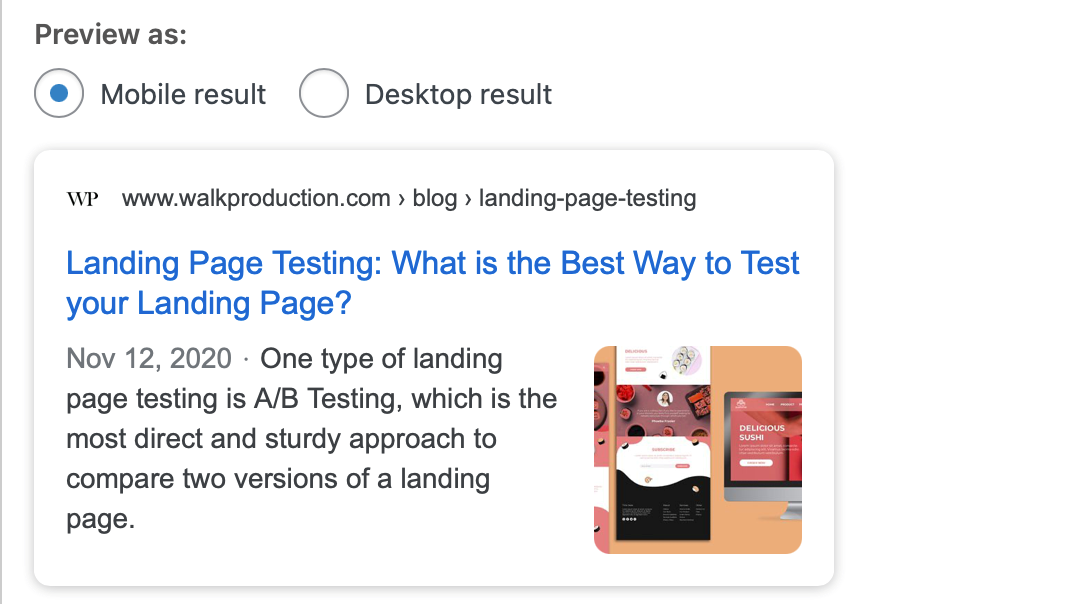It’s nice to think that creating a spectacularly written blog post would automatically captivate flocks of readers.
If that were indeed the case, you’re unlikely to be lurking on this SEO Checklist.
No matter how compelling or relevant your content is, 1.8 billion other pages are published online every day.
Sadly, an appalling 90.63% of that content attracts zero traffic from Google, according to a study by Ahrefs.
Without proper SEO, what are blog writers to do?
Using SEO to Drive Traffic to Your Blog
The best practices for blogging include none other than search engine optimisation — tailoring your content to search engines to rank in the remaining 9.37%.
Before starting on your next post, remember that the best time to optimise blog content is when you’re crafting it.
In fact, you are currently witnessing SEO-driven writing at this very moment. But of course, you can always go back to your old articles and make improvements.
What most SEO checklist authors fail to communicate is that it’s an ongoing process.
While these checklists can be helpful, don’t be fooled into thinking that SEO is done once and checked off like other one-time tasks.
That said, join us as we share our wisdom in optimising your blog posts to enhance reach and readability!
READ MORE: 5 Successful SEO Case Study Malaysia 2020 with Real Results
Your Ultimate SEO Checklist for Business Blogs
Let’s kick things off with some basics.
There are great techniques and tricks to implement these practices, but we will focus more on on-page SEO efforts that elevate visibility and search rankings.
First and foremost, any content writer will tell you the importance of answering your viewers’ questions.
What information are they seeking?
People want immediate answers, so your title itself has to be telling and concise, which brings us to:

1. Keyword Research
Beginners sometimes take blind guesses about what topics might instil interest in their users.
However, why work hard when you can work smart?
Keyword research is a technique SEO experts utilise to discover the best terms and phrases users look for based on concrete search engine data.
Through evaluating the search volume and ranking difficulty, you can pinpoint the targeted keyword — the foundation your blog post will build on.
First, make a list of relevant topics based on your industry, or ask your team for the most frequent queries they receive.
For example:
- New Properties in Malaysia
- Properties for Sale Malaysia
- Best Places to Live
Next, use keyword research tools, i.e. Ahrefs, to analyse these phrases on the Search Engine Results Pages (SERPs).
Such tools offer in-depth keyword data, keyword position tracking, competition analysis, and other illuminating features.
You may also pay attention to Google’s autofill feature that suggests highly searched and relevant long-tail keywords.
If you’re using Ahrefs, you can use the “matching terms” component to source for more ideas as well and see what your competitors are writing about.
The primary agenda is to find the sweet spot between a high volume searched term but not excessively high, making it difficult to rank.
READ MORE: How to Plan an SEO Campaign that Works?

2. Structuring Your Blog Post Based on Targeted Keyword
Once you’ve hit the keyword jackpot, it’s time to structure your whole post around it. Now, there are several critical elements where you need to incorporate the keyword.
We’ll go through each one below:
- Title
Any piece of content should have a compelling title relevant to the search query. And especially so because it’s the first thing that Google scans when ruling out spam material.
The best practice is to include your keyword right at the front or within the first 60 characters of the title. Otherwise, your headline might get cut off in the SERPs.
- Headers & Body
As you’re developing the body copy, make sure to mention the keyword throughout, finding a good balance regularly.
You can integrate the keyword in the first and last heading to avoid over-optimisation and include relevant keywords in between.
Learn more about optimising headers on Yoast’s SEO blog.
Additionally, try to write in shorter paragraphs for readers to cruise through your content easily, even on their mobile phones. Use bullet points, numbers lists and so on if needed.
In your closing statement, remember to include a call-to-action. A CTA is an action item that tells your readers where to go for more information or engage with you through interactive platforms.
Regardless, you should design the CTA in a way that affirms the post as written for your intended audience.
- Permalink
Yes, even the URL plays a role in your SEO checklist.
Google’s army of crawl bots certainly thinks so, at least. Every post published on your blog lives on its unique permalink, and your keyword must reside there too.
It would also be wise to take longevity into account when optimising your URL. Try avoiding dates, numbers and anything that could change with the post’s age.
- Meta Description
The meta description is just as essential. Its purpose is to give search engines and readers the gist of what your post is about.
By summing up your article in 175 to 300 characters with the keyword phrase, Google will determine your description as helpful and pull it into the SERPs page.

Still, ensure that your meta description is engaging and entices readers to click on your content. Don’t just keyword it, but really provide a copy that fulfils contact of what your topic will apprise.
READ MORE: Top 10 Blog Benefits for SMEs Malaysia
3. Readability Format
People don’t like spending too much time reading something online.
So, keep in mind to be as direct as possible and format your article for a speed reader, favouring both user experience and SEO optimisation.
However, this doesn’t mean you should write shorter blogs.
As mentioned, you can break your content into short paragraphs and still hit a 2,000-wordmark, the length in which gains the most traction for generating leads.
4. Link to Existing Content
An excellent post links to other useful, related content sources where they make sense.
This strategy not only benefits your readers but boosts your rankings for all your pages as well.
How?
Search engine spiders do a quick crawl following links to rank your post.
As the Googlebot does this, it works out how each page is related, covering similar subject matters. Google will then divide link value across your pages.
Say you have a high-ranking blog post with plenty of backlinks. Assimilating a link to that post will help your new post receive some of the current link value.
Besides that, internal links are also a vital facet for providing additional resources to related content on your site. When done right, watch your rankings naturally climb up!

5. Optimise Images with Alt Text
Images matter too. A full-length text without any pictures gets boring fast, which means you probably included various illustrations to support your content.
Don’t forget to optimise them.
Understandably, search engines are bots and cannot interpret what an image is referencing without contextual text. This is known as image alt text.
Try explaining what the image is about in a descriptively helpful way, incorporating your key phrase. Use targeted keywords when relevant, but likewise, don’t over-optimise.
6. Categories and Tags
Categories indicate an article’s broad grouping within your blog, while tags further describe each post and topic.
Selecting the category most related to your post and adding the appropriate tags will be helpful to your audience.
Sometimes, bloggers make the mistake of misusing topic tags, tagging similar multiples.
As a result, Google could penalise you for having duplicate content, severely affecting your search rankings.
Ensure not to go overboard — less is more.
READ MORE: WordPress SEO Strategy for Beginners
Keep this Checklist at the Ready!
It may appear complicated at first, but you won’t have too much trouble improving your search rankings with this trusty list.
At the end of the day, you should put your readers at the forefront when writing.
Solving their problems always comes first.
Don’t have the time for SEO content writing?
Consider employing Walk Production’s content marketing services, including blog management, creative copywriting, on-page and off-page SEO, and more.
READ MORE: Website Design Checklist: 10 Essential Things To Include in Your Company Web Design

